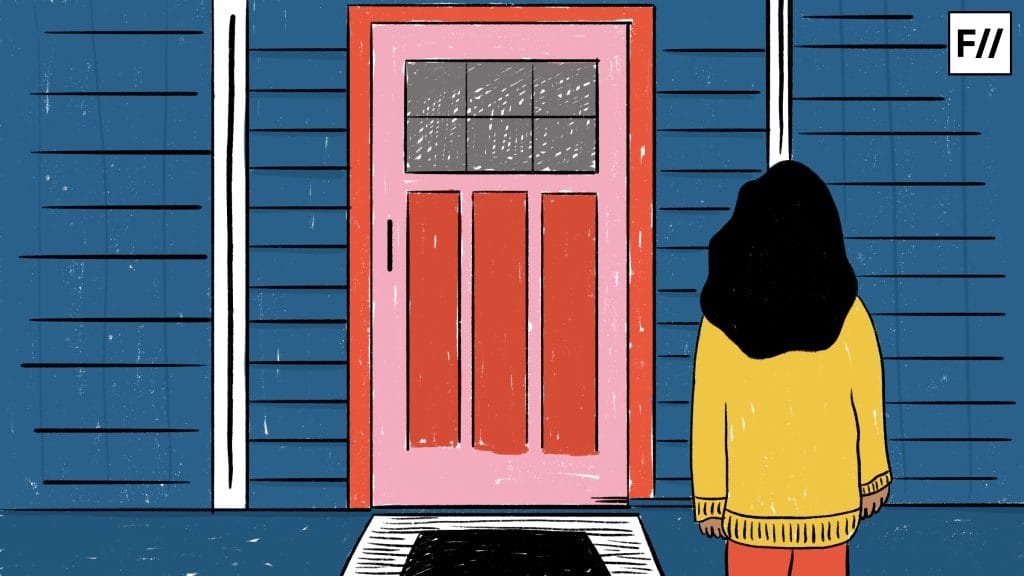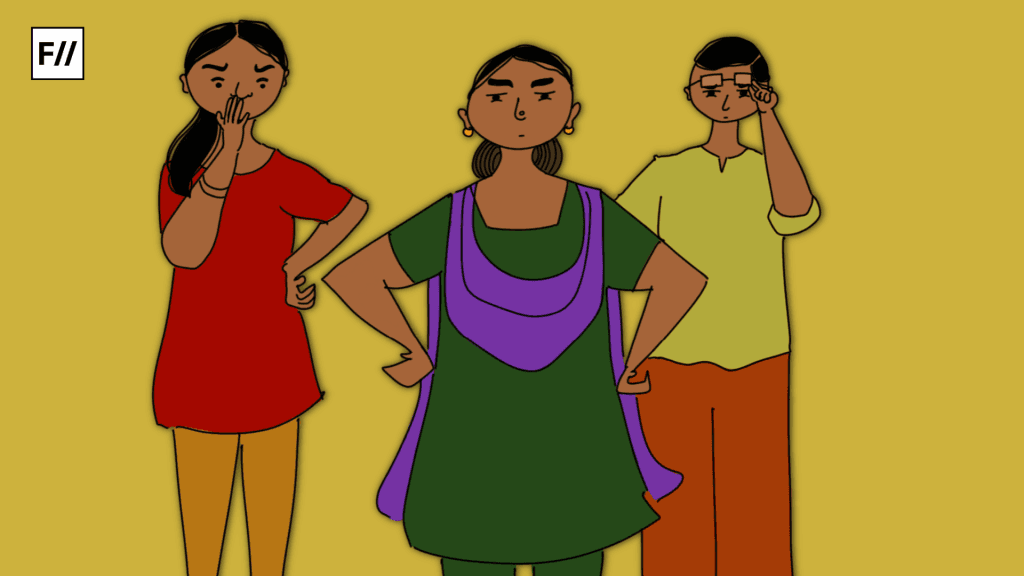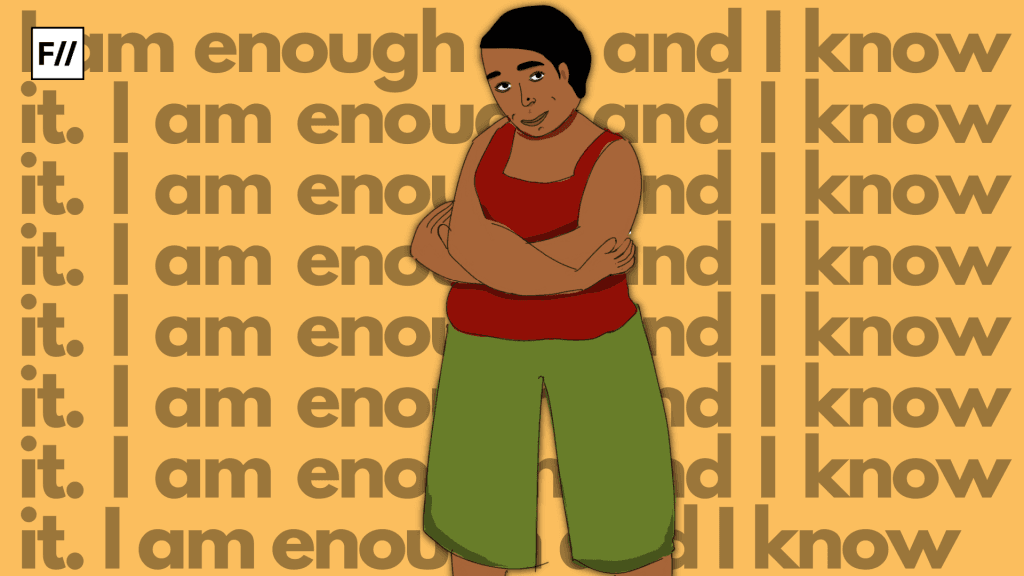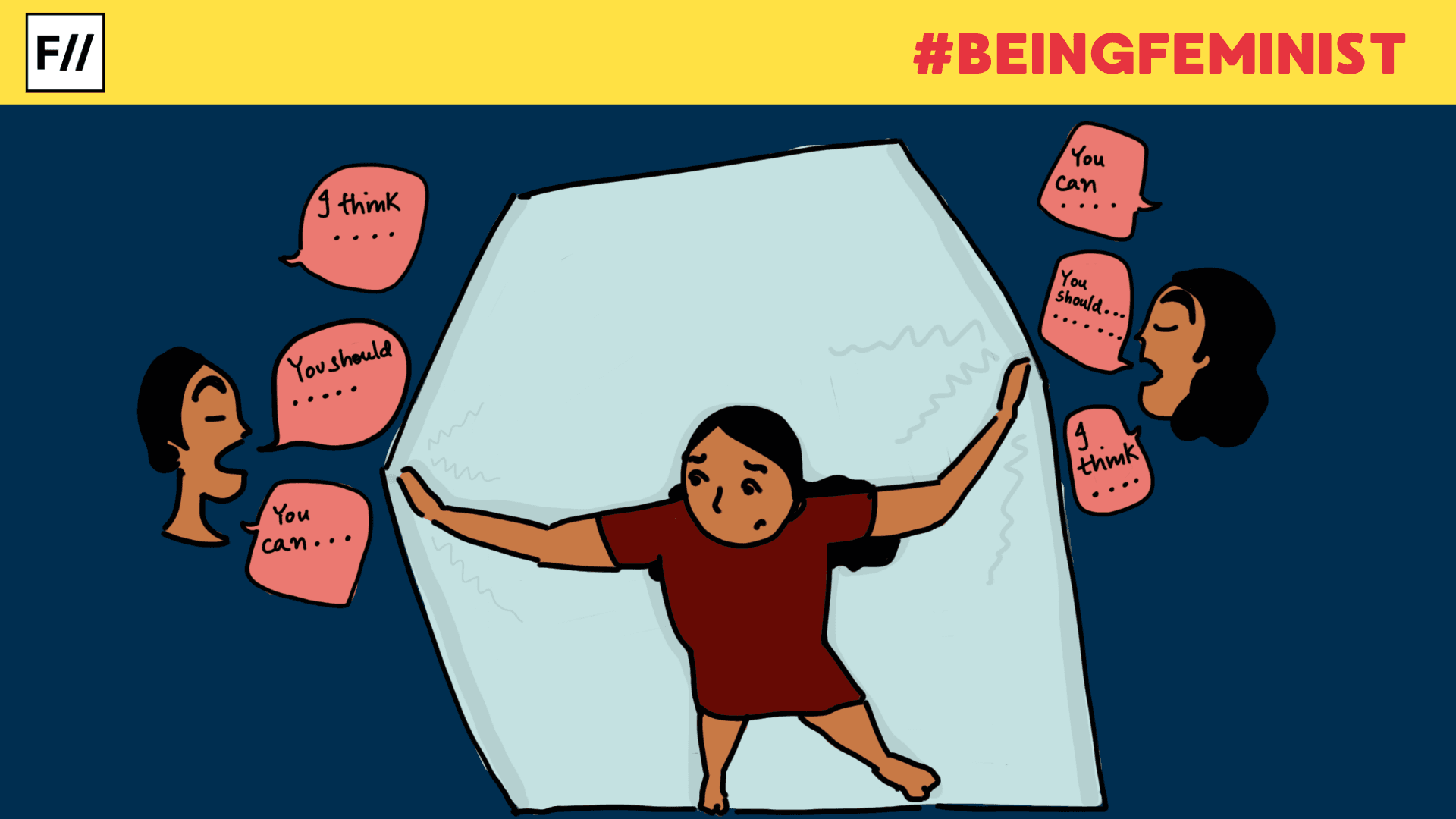Gender and space have always been related to each other. Access to space is an important part of one’s autonomy. However, the roles and associations attached to any space dictate the usage of any space by one gender over the other.
As to speak, every individual is free to move and use space as they wish to do, the question arises, can they? What enables or disables them in doing so? As any other person, I too navigate through the public space, but as a woman, my usage differs wildly from a man. Technically, I am free. I can go wherever I want, whenever I want, I exercise my freedom to move as a free citizen, but can I? There is this voice in the back of my head, often my mom’s when in reality, it says, I should not be loitering, it is not safe, what if…?
Even on a rebellious day, when I wish to loiter, roam without any purpose or reason, just go out, wander the streets, walk around, and maybe get ice cream, I am met with endless thoughts which hold me back from stepping out. Taking a moment, overcoming these but the trip to the door itself brings many questions, enough to demotivate me. “Where are you going?” “Who are you meeting?” “exactly when will you be back?” “Why do you have to go out after dark?” “What will you do out for so long?” the enquiry remains endless.
I have never heard of any of my male friends or even my brother for that matter having to undergo such interrogation to step out. Any time of the day. They never have any purpose for which they go out, they do simply because they want to. There are no questions, no time restraints, and barely any curfews, all it takes for them is “I am going out.” No string of where, why, what, how and with whom. The ability to exercise autonomy is quite evident and remains a dream for many of us.
Men hanging out is a common sight. He can wander alone after dark, stop for a chai or make spontaneous plans. Women cannot do the same. They cannot stop wherever they please, or idly sit by in a park or so. The activity of loitering is a gendered one.
Planning, plotting and precaution: The process of stepping out
The process of stepping out of the house as a woman is a tedious one. It requires the 3 Ps: planning, plotting and precautions.

First comes the planning. Planning the where, why, how, and when of any journey. Mapping out the journey, and public transport. Then comes the plotting. Working on stating the purpose and making our case to the family members who then decide whether the purpose is a reasonable one or not and most importantly timing it with the sun and last but very least, precaution. Locating the most suitable and modest, body covering clothing which makes me invisible if not aversive to any gaze.
As a woman who travels alone, there is no scope for leaving the house unplanned, spontaneous plans or last-minute changes are a luxury which most women cannot afford. She must dress modestly, cover herself up and be invisible. The route from point to point must be planned out very carefully while considering every and any external deterrent. While passing through she must be alert, vigilant and highly aware of her surroundings. Not being so only backfires in her face. She must reach her destination, fulfil her purpose of being there and leave earliest she can. And what if she wishes to wander a bit? To loiter? Even the thought is preposterous.
A woman cannot loiter, a loitering woman is up to no good. Why would she loiter unless she is inviting for something untoward to happen? And so, she returns without stopping for tea or taking a moment to enjoy the weather or the sky. Always in a rush to make it back. The curfew cannot under any circumstance be violated. Non-compliance with the curfew leads to only being labelled as irresponsible, absent-minded, and undisciplined, leading to further curtailment of free movement.
Public space and its accessories
A woman is always taught to be home on time, abide by the curfew, and not stay out after dark. No one tells her that she cannot loiter, but she is told what she can do. Never is it mentioned out loud, but it is taught that her commute must be undeviating from home to her school or college, work, friend’s place and so on.

In the public sphere, the disparity has reduced between the man and the woman. Both are educated, working, and earning but the ease of doing so isn’t quite as close as you think it would be.
Regardless of all the planning, plotting and precautions, access to public space is highly restricted to women. Access to public space comes along with its accessories without which the safety of women cannot be endangered. The male gaze, hoots, poor lighting, and access to public transport such as autos are some to begin with. Public space cannot be the end destination for a woman, only the means to get somewhere sheltered and safe.
The argument to restrict women’s freedom of movement is often met by security and safety issues. But ironically, the solution to creating a safe place is not to increase surveillance or protection but to curtail freedom and liberty, not of the offender or potential offenders but women. This is how society sees fit to keep women safe- we lock them up and we let the offenders roam free. And so to counter this argument, to acquire liberty, and gain access to the public space women must exercise their right to take risks. For it is by claiming this right only can she truly claim her citizenship. To comprehend it better, we must redefine our understanding of violence- not see sexual harassment but denial of access to public space as a worse outcome.
Deprivation, a woman’s activity
Denial of access to public space elicits more than meets the eye. It leads to deprivation. Deprivation of education, work opportunities, of self-time. Women are deprived of education when due to unsafe public spaces they are asked to travel back early even if it is at the cost of their education and missing classes. They are deprived when due to working hours, or simply due to fear of regular commute through public spaces and transport.

Ensuring safety in our society has not been through measures such as increased surveillance, protectionism, or strict actions towards any offenders but rather through restriction, denial, and constraints over women.
At last, as Shilpa Phadke writes in her prologue to Why Loiter?-
Imagine an Indian city with street corners full of women: chatting, laughing, breast-feeding, exchanging corporate notes or planning protest meetings. Imagine footpaths spilling over with old and young women watching the world go by as they sip tea, and discuss love, cricket and the latest blockbuster. Imagine women in saris, jeans, salwars and skirts sitting at the nukkad reflecting on world politics and dissecting the rising Sensex. If you can imagine this, you’re imagining a radically different city.
About the author(s)
Ketki (she/her), is a curious political science student who loves exploring new ideas, places, and cultures. She has gained diverse work experience across event logistics, exhibitor relations, and research, always eager to learn something new. She has a soft spot for cats. In her free time, she loves to travel, listen to wildly different music and watch thrillers.






Amazing 👏